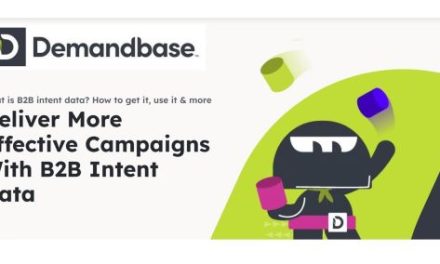Ruth Stevens about Customer Relationships: Marketing should be providing support across the entire customer relationship
 It seems like every week I see a new research report naming leads as the top priority of B2B marketing departments. It’s no wonder CMOs focus an estimated 85% of their efforts on acquisition. Ask any sales person, “What do you want from marketing?’ They’ll say, “Leads! Give me leads!” Just like Jack Lemmon in Glengarry Glen Ross.
It seems like every week I see a new research report naming leads as the top priority of B2B marketing departments. It’s no wonder CMOs focus an estimated 85% of their efforts on acquisition. Ask any sales person, “What do you want from marketing?’ They’ll say, “Leads! Give me leads!” Just like Jack Lemmon in Glengarry Glen Ross.
But here’s the rub, dear CMOs: There’s an even bigger opportunity in the “back end,” where most of the firm’s revenue and profits actually lie. I’m talking about everything that comes after the lead-to-sales handoff. Where the sales teams and account managers can gain enormous leverage from a relatively small amount of effort on the part of marketing.
In short, marketing should be providing support across the entire customer relationship. Here are just three examples of areas where marketing can accelerate the existing sales and service functions:
- Lead Nurturing
We know that 45% of business inquiries—whether they come in through campaigns, referrals or over the transom—eventually buy in the category. Not all will qualify immediately, so we need to stay in touch with the unqualified leads, until they become ready to see a salesperson—and keep them from going to the competition.
Marketing must operate an outbound communications process for nurturing the inquiries to the point where they are ready to take up the valuable time of a salesperson. This process, by definition, belongs in marketing, and is another way marketing can contribute to sales productivity. (Never, ever pass an unqualified lead to sales, no matter how much they press.)
- Lead-to-sales Conversion
Once the salesperson is working the account, marketing can help them close faster in a variety of ways, among them:
- Research the members of the buying group, their roles and their internal relationship, to ensure the database holds a complete record of each person involved. Use IP address identification on your website to capture additional names from target accounts.
- Understand their needs and agendas, to craft relevant, personalized communications to all members of the buying group, thus vastly extending the reach of the sales person covering the account.
- Provide the sales team relevant content, events, testimonials, and case studies to help sales smooth the closing process.
- Account Management
Covering a high-value business account can be a challenge for a sales person, even for a team of people. Here’s where marketing can step in to provide more arms and legs to the task of identifying opportunity in the account, fending off competitors and deepening the customer relationship in general.
For just a few examples of ways marketing can expand their value to the account management function:
- Outbound communications, signed by the account manager, to users and influencers inside the account, in the form of a well-defined, and highly personalized, contact strategy. With non-salesy messaging.
- Communications focused on existing-product upsell and cross-sell opportunities.
- Research on opportunity in additional business units and geographies.
- Database analysis to provide account managers with buying signal and other “reasons to call” into the account.
- Outbound communications to users and senior managers asking for referrals. The list goes on and on.
I hope I’ve made a compelling case for broader marketing involvement in areas that are often viewed as the exclusive province of sales. But keep in mind: Like any new venture, this expanded role for marketing requires buy-in and cooperation from both sales and senior leadership. To me, the argument for applying lower-cost, highly skilled marketing resources to provide leverage to constrained sales resources makes clear business sense. But without buy-in, the idea is going nowhere. So, I call on not only CMOs, but the entire C-suite. Let’s expand the mission of marketing across the entire breadth of the B2B customer relationship.
About the Author: Ruth P. Stevens is a member consultant of Consultants Collective. She advises clients on customer acquisition and retention, for both ![]() consumer and business-to-business clients. Ruth serves on the boards of directors of the HIMMS Media Group, and the Business Information Industry Association.
consumer and business-to-business clients. Ruth serves on the boards of directors of the HIMMS Media Group, and the Business Information Industry Association.
She is a trustee of Princeton-In-Asia, past chair of the Business-to-Business Council of the DMA, and past president of the Direct Marketing Club of New York. Ruth was named one of the 100 Most Influential People in Business Marketing by Crain’s BtoB magazine, and one of 20 Women to Watch by the Sales Lead Management Association. She serves as a mentor to fledgling companies at the ERA business accelerator in New York City. Ruth is a guest blogger at AdAge, HBR.org, and Target Marketing Magazine. Her newest book is B2B Data-Driven Marketing: Sources, Uses, Results. She is also the author of Maximizing Lead Generation: The Complete Guide for B2B Marketers, Trade Show and Event Marketing, and co-author of the white paper series “B-to-B Database Marketing.” Ruth is a sought-after speaker and trainer, and has presented to audiences and business schools in Asia, Australia, and Latin America. She has held senior marketing positions at Time Warner, Ziff-Davis, and IBM. She studied marketing management at Harvard Business School, and holds an MBA from Columbia University. Learn more at www.ruthstevens.com.
Source: Ruth Stevens on Biznoloty



![Salesforce Q4 2024 Revenue Up 11%, FY Up 11% [Fiscal Year Ended January 31, 2024]](https://www.biia.com/wp-content/uploads/2024/03/Salesforce-Fiscal-2024-Fin-Results-ended-Jan31-2024-440x264.jpg)






















